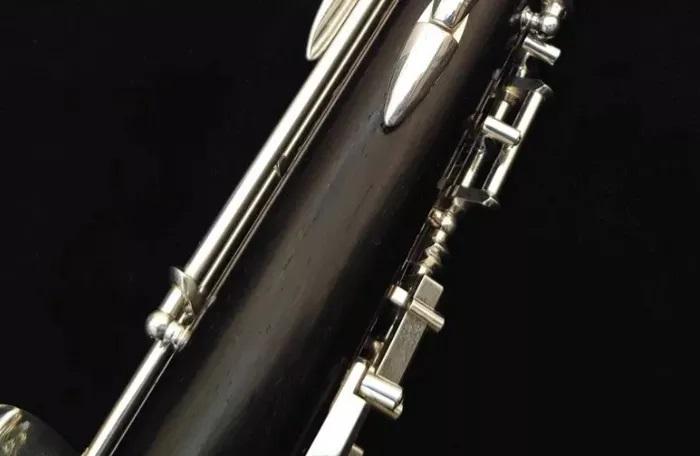What Clef Does English Horn Use? You Should Know

The English horn, or *cor anglais*, is a double-reed woodwind instrument in the oboe family. It has a deeper and more mellow sound than the oboe, often associated with lyrical, expressive passages in orchestral and chamber music. One of the most frequently asked questions about this instrument is: what clef does the English horn use?
Understanding the clef used in English horn music is crucial for both performers and composers. It affects how music is read, transposed, and interpreted. In this comprehensive article, we will explore the clef the English horn typically uses, why it uses that clef, and how it relates to other musical instruments.
The Primary Clef Used by the English Horn
The English horn primarily uses the treble clef. This may come as a surprise to those unfamiliar with transposing instruments, especially given the English horn’s lower pitch range compared to the oboe. Despite its deeper tone, the notation remains in the treble clef, just like the oboe.
Why the Treble Clef?
There are several practical reasons for this:
Consistency within the oboe family: The English horn is closely related to the oboe, which also uses the treble clef. Maintaining the same clef simplifies the reading process for doublers who play both instruments.
Transposing nature: The English horn is a transposing instrument in F. This means that when a player sees a written C, it sounds as an F below. By writing the English horn part in the treble clef, the actual pitch is lowered a fifth automatically through transposition, without altering the clef.
Understanding Transposition for the English Horn
Since the English horn is in F, it transposes down a perfect fifth from written pitch to sounding pitch. For instance:
-
A written C sounds as F below.
-
A written G sounds as C below.
-
A written D sounds as G below.
This transposition can be initially confusing for new players or composers. However, it’s a long-standing convention that helps keep fingerings consistent across instruments within the oboe family.
How Transposition Affects Reading Music
For performers, the use of the treble clef and transposition means they must learn to associate written notes with different sounding pitches. This is typically internalized through practice and training. For composers and arrangers, writing for the English horn requires transposing the original line up a perfect fifth, so that when it is played, it sounds in the correct register.
Comparison with Other Clefs and Instruments
Although the English horn uses the treble clef exclusively, other instruments with a similar range may use different clefs. For example:
Bassoon: Uses bass clef, and occasionally tenor clef for higher passages.
Cello: Primarily uses bass clef, but can shift to tenor or treble clef.
English horn: Despite its lower range compared to the oboe, sticks with the treble clef due to its transposing nature.
Using the treble clef simplifies the reading process and avoids the need for clef switching during performance, which can be distracting or confusing in a fast-paced musical setting.
Historical Use of Clefs in English Horn Music
Historically, the English horn has always been notated in the treble clef. Its introduction in orchestral literature during the Classical and Romantic periods saw composers such as Berlioz, Wagner, and Dvořák writing extensively for the instrument — always using the treble clef.
This tradition continues today in all major orchestral, chamber, and solo literature for the English horn.
Common Misconceptions About the English Horn Clef
“Shouldn’t the English horn use the alto clef?”
This is a common misunderstanding. The alto clef, used by instruments like the viola, centers middle C on the middle line of the staff. While this might seem appropriate given the English horn’s range, it would complicate matters for woodwind players accustomed to the treble clef.
“If it sounds lower, why not use bass clef?”
Again, although the English horn has a deeper tone than the oboe, it’s not low enough to require the bass clef. Most of its range comfortably fits within the treble clef staff. Additionally, using bass clef would require performers to learn an entirely different system of note reading — unnecessary and impractical.
Tips for Reading English Horn Music
If you are learning the English horn, here are some practical suggestions:
Practice transposing mentally: Develop an intuitive sense of how written notes relate to sounding pitches.
Work on treble clef fluency: Mastering the treble clef will make reading English horn parts much easier.
Study oboe music: Since oboe and English horn fingerings are nearly identical, studying both can reinforce clef reading and finger positions.
English Horn Repertoire
Many orchestral and solo works demonstrate effective use of the treble clef in English horn parts:
Berlioz – “Symphonie Fantastique”: Features a lyrical English horn solo.
Dvořák – “New World Symphony”: Contains one of the most famous English horn solos in classical music.
Sibelius – Symphony No. 1: Uses the English horn for atmospheric melodic lines.
In each case, the part is written in treble clef, transposed a fifth higher than sounding pitch.
Conclusion
The English horn uses the treble clef, despite its lower pitch range compared to the oboe. This standardization simplifies the learning process, ensures consistency across the double reed family, and facilitates ease of performance and composition.
Music notation serves as the bridge between musical ideas and their realization. The treble clef, in the case of the English horn, is a practical and historical choice that continues to support the instrument’s distinct voice in solo and ensemble settings. With a solid grasp of transposition and treble clef reading, anyone can begin to explore the rich world of English horn music.
- Art
- Causes
- Crafts
- Dance
- Drinks
- Film
- Fitness
- Food
- Games
- Gardening
- Health
- Home
- Literature
- Music
- Networking
- Other
- Party
- Religion
- Shopping
- Sports
- Theater
- Wellness


